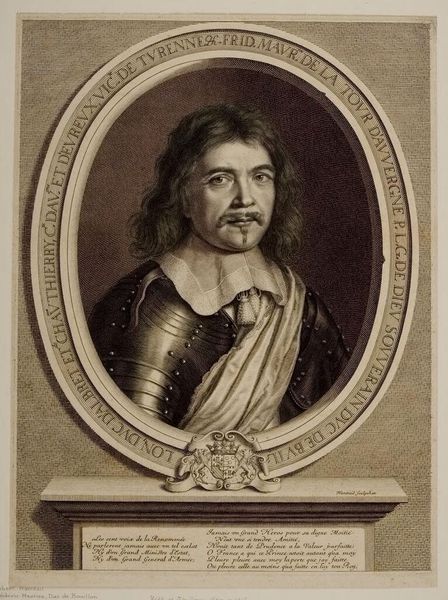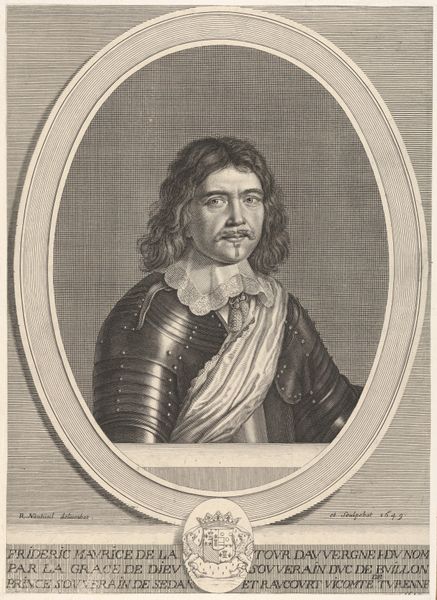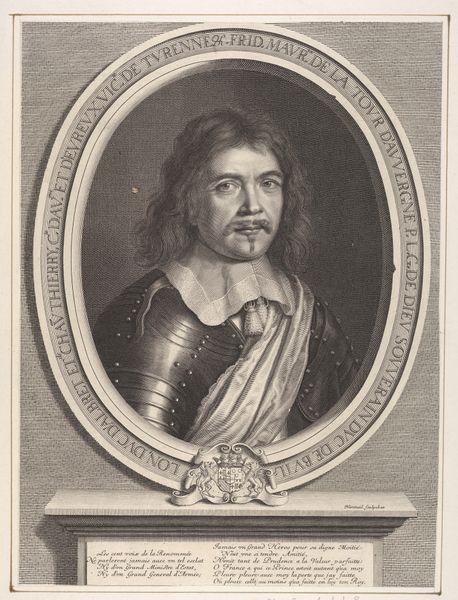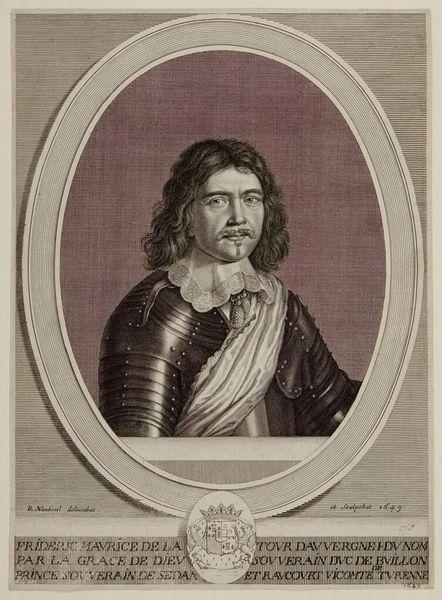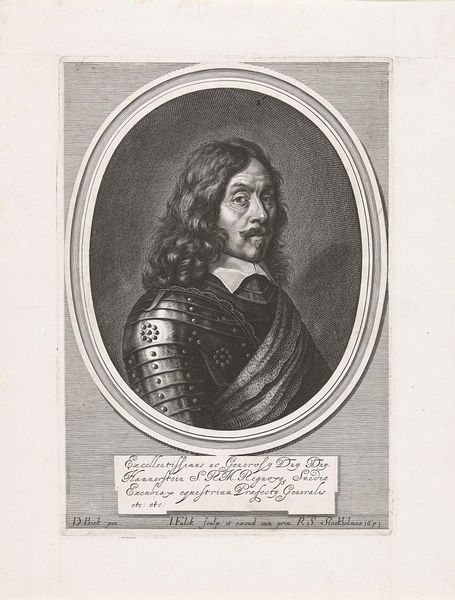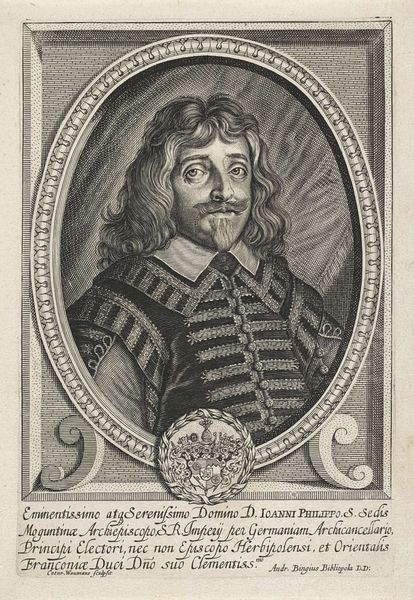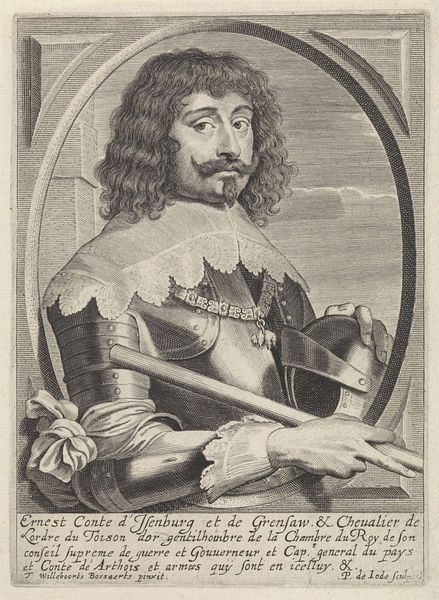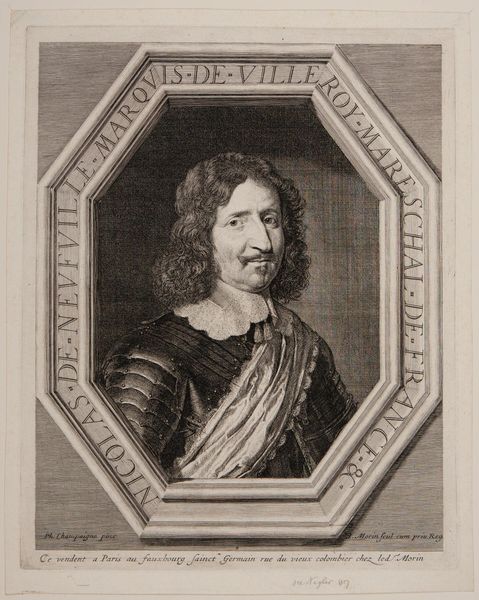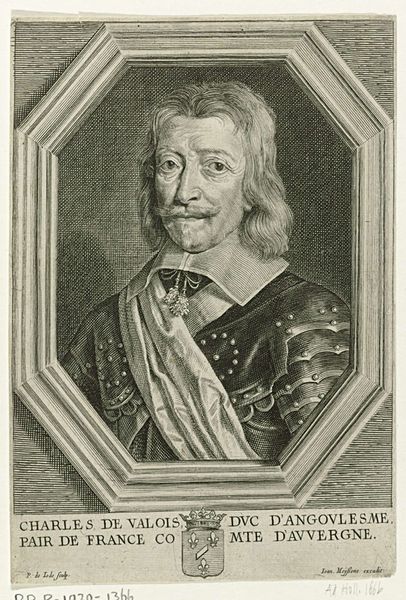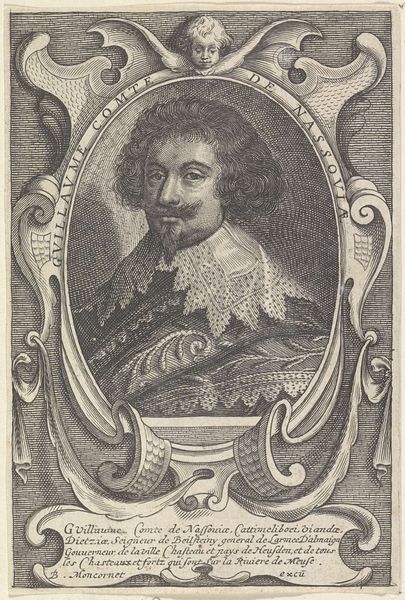
Dimensions: 10 11/16 x 8 9/16 in. (27.15 x 21.75 cm) (plate)16 1/2 x 10 3/4 in. (41.91 x 27.31 cm) (sheet)
Copyright: Public Domain
Curator: Let's turn our attention to this engraving titled "Portrait Bust," crafted in 1773 by Jacques Nicolas Tardieu. It resides here at the Minneapolis Institute of Art. Editor: Immediately striking. There's a formality, naturally, given the portrait style and period. The rendering of light on the armor, though – it's wonderfully executed, bringing a starkness to the piece, don’t you think? Curator: Indeed. Tardieu was a prominent engraver within the French Royal Academy during a period when printmaking was crucial for disseminating imagery and constructing public personas of power. Engravings like these helped establish and reinforce the status of elites. The sitter’s armor speaks directly to that. Editor: Observe the delicate, almost lace-like quality to the hair rendered by Tardieu. How it contrasts with the geometric structure of the armor. It is such attention to contrasting texture that holds my gaze. Curator: And consider the role these portraits played in society. They were more than just images; they were declarations of identity, meticulously crafted and widely distributed to project an image of authority and sophistication, and inevitably, contributing to the dynamics of the French aristocracy, a system facing increasing critique. Editor: The oval frame also deserves mention. It provides both enclosure and focus, directing our eyes inwards to the subject’s expression, which is both noble and just ever so slightly melancholy, I perceive? Curator: The slight downturn of the mouth and introspective gaze contribute to that reading, for sure. But it may reflect something deeper: The growing sense of unease of the ancien régime facing criticism of its practices, which the portrait tries to obscure with symbols of strength, status and military prowess. Editor: Well, whichever interpretation we embrace, Tardieu certainly provided us with much to think about. Curator: Absolutely. It shows how visual representations become active participants within the theater of history and how they might be more truthful that its elites might expect.
Comments
No comments
Be the first to comment and join the conversation on the ultimate creative platform.
